There’s something very satisfying about a hand drawn map, don’t you think? This one is from a leaflet; one from my collection of leaflets detailing local walks, which I have acquired over the years and keep filed away on a shelf. I dug it out because I wanted to compare it with this map…
Which is from ‘Old Silverdale’ by Rod J. Ireland, which I bought last week, a little birthday present to myself, and which I’ve been poring over ever since. This map shows more wells than the first. At some point, I shall have to see if I can find any trace of the additional wells shown. But on this occasion I contented myself with following the route shown in the leaflet.
Cheery Dandelions.
Cheery Celandines.
Elmslack Well.
Yes, I realise that it’s actually a bin. But I’m told that it’s on the site of the old well.
Inman’s Road.
Not wells, I know, but these tanks formerly collected and supplied water to Hill House, now the Woodlands pub, so they seem relevant. Mains water arrived in the area in 1938 (there’s still no mains sewers). Until then the wells would obviously have been important. Also many houses had tanks on the roof which collected rain water.
This photo is the best I managed from a satisfyingly close encounter with ‘the British bird of paradise‘, or more prosaically, a Jay. The Jay moved from branch to branch, but unusually, stayed in sight and not too far away. Sadly, never long enough for me to get any half decent photos.
This squirrel was more obliging.
Wood Anemones.
The Toothwort beside Inman’s Road is much taller than it was, but already beginning to look a bit tatty and past its best.
More Wood Anemones.
Chaffinch.
Dogslack Well.
Comma butterfly.
Bank Well.
The light was stunning and making everything look gorgeous.
Coot chick.
Well, almost everything. This is the kind of face that only a mother could love, surely?
Lambert’s Meadow.
I like to think that this is a Raven, sitting atop a very tall tree, regally surveying the meadow and the surrounding woodland. But none of the photos show the shaggy throat which is supposed to make it easy to distinguish between Ravens and Crows. So, I’m not sure.
Burton Well
The pond at Woodwell.
There are newts at Woodwell. We hardly ever see them. But today, not only did I see one, but I managed to train my camera on it…
Blast!
Golden Saxifrage.
Woodwell.
The Ramsons in Bottom’s Wood are looking particularly verdant, but no sign yet of any flowers. On the verge of Cove Road, near to the Cove, the flowers are already on display. The flowers always seem to appear there first.
Cherry blossom.
Jackdaw.
Song Thrush.
Nuthatch.
On the Lots there were Starlings and Pied Wagtails foraging on the ground.
Crow – the second evening in a row when a crow has been perched on this branch.
Pied Wagtail.
It was one of those magical days when lots of birds seemed content to sit still and be photographed. Lots, but not all. The Buzzards were flying above the small copse above the Cove. I watched them through the trees as, once again, they both flew in to perch on a tree at the far side of the wood. This time it was the same tree in which a Tawny Owl obligingly posed for a photo one evening some years ago. They were tantalisingly close, maybe I could get some good photos?
But when I switched on my camera, what did I notice, much closer to hand…
…a pair of Nuthatches.
Since I learned to recognise the slightly monotonous song of Nuthatches, I’ve come to realise how very common they are in this area. And I spot them much more often than I used to. As a boy, these were an exotic rarity to me, and fortunately their ubiquity has done nothing to reduce the thrill I still feel when I see them.
One of the pair sat and pruned itself for quite some time and I took lots of photos before eventually turning my attention back to the tree where the Buzzards…
…were no longer perched.
I scanned other trees for a while, and then, just as I reluctantly gave up on the idea of seeing the Buzzards again, there they were, not in a tree, but in the adjacent field, one on the ground and the other sat on a dry-stone wall, and showing to much better advantage than before. But before I took any photos, they were off again.
Starling.
Bullfinch.
Morecambe Bay.
Blackbird – in almost the same spot as the night before.
Five for silver.
It was getting a bit dark for bird photos at this point, but this Goldfinch was behaving in a way which I’ve noticed a couple of times recently; it was singing, swivelling sharply through ninety degrees singing again, then back and so on. The precision of it seemed quite aggressive, but at the same time, pretty comical.
The leaflet says that this walk is ‘about four miles’, but although I’d skipped the out and back to Bard’s Well on the shore, The Move App was telling me that I’d walked five miles. And despite the Jay, the Newt and the Buzzards all evading my camera, this had been a very satisfying five miles.

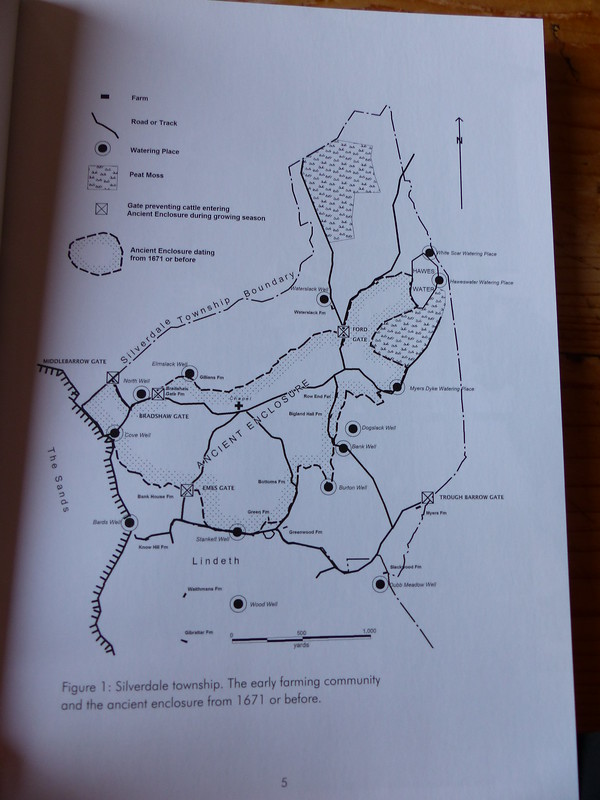

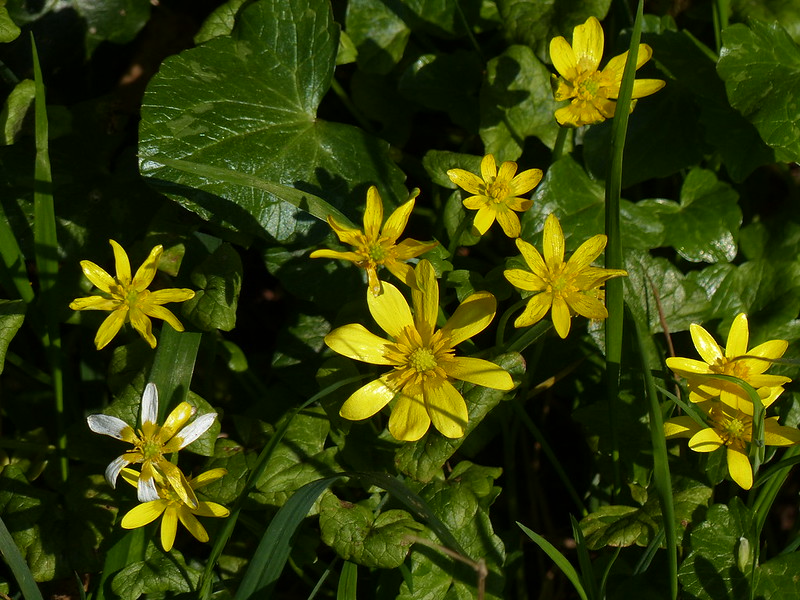



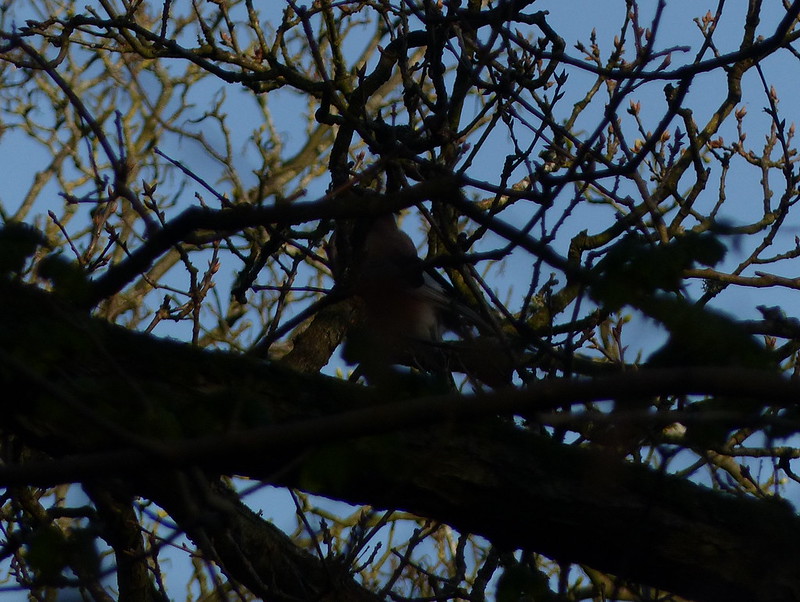
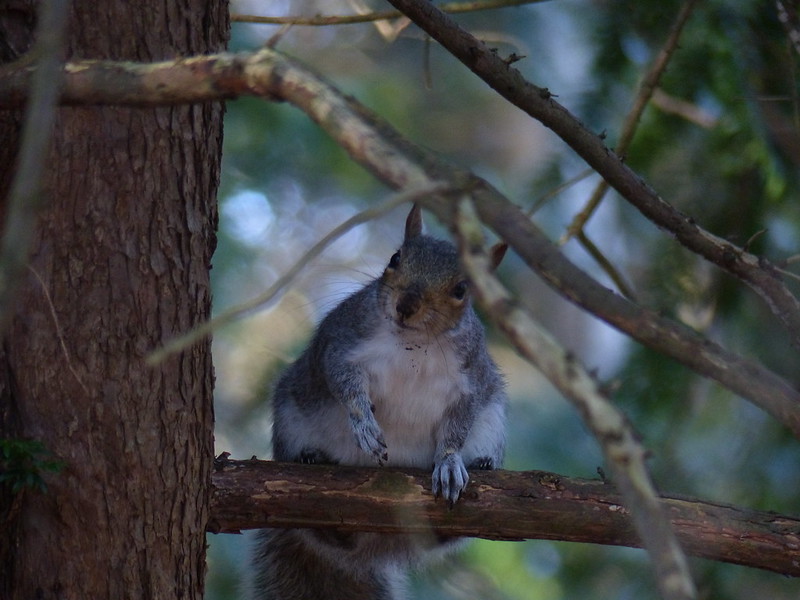
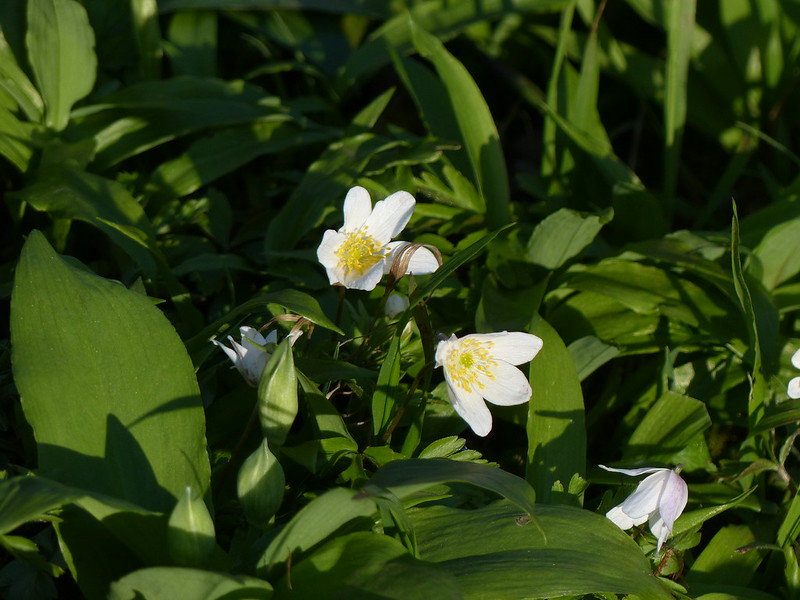


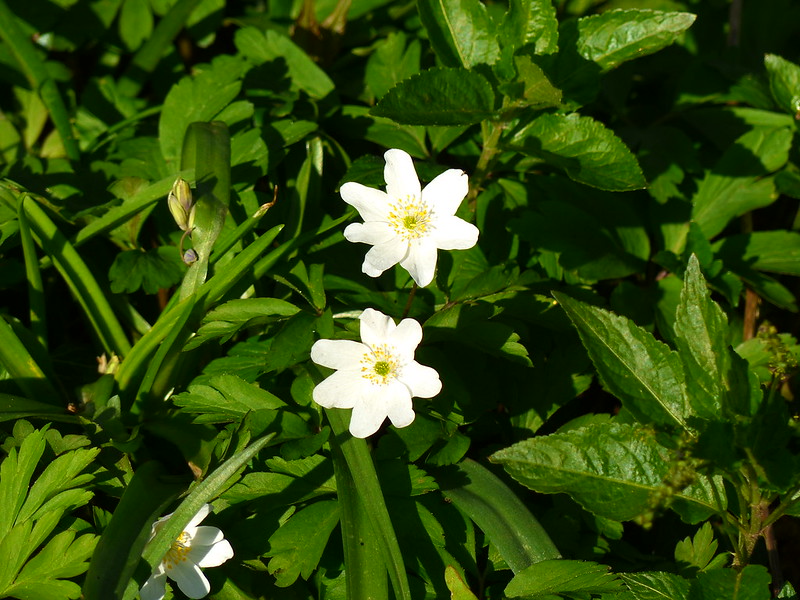


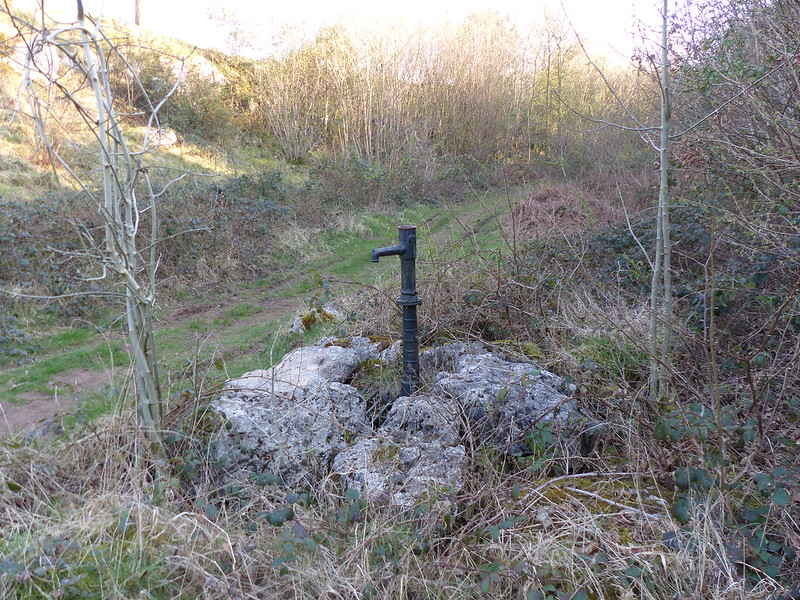
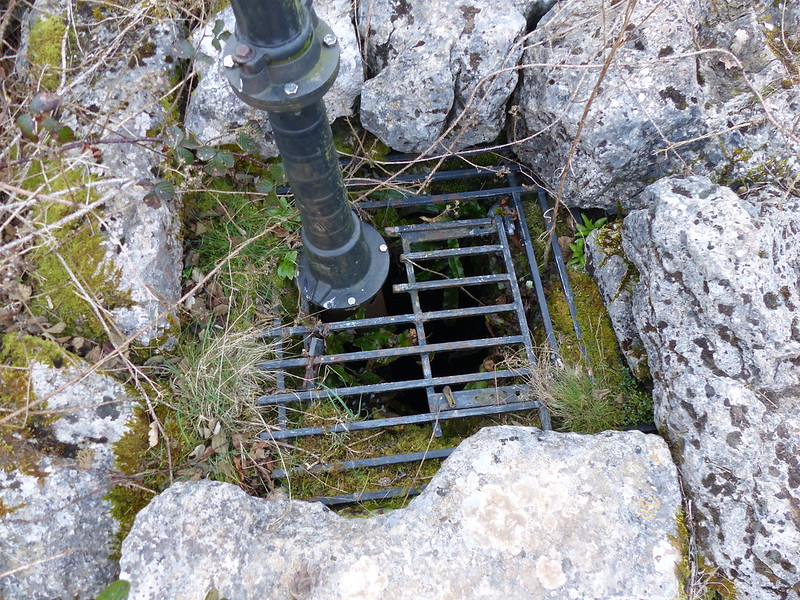
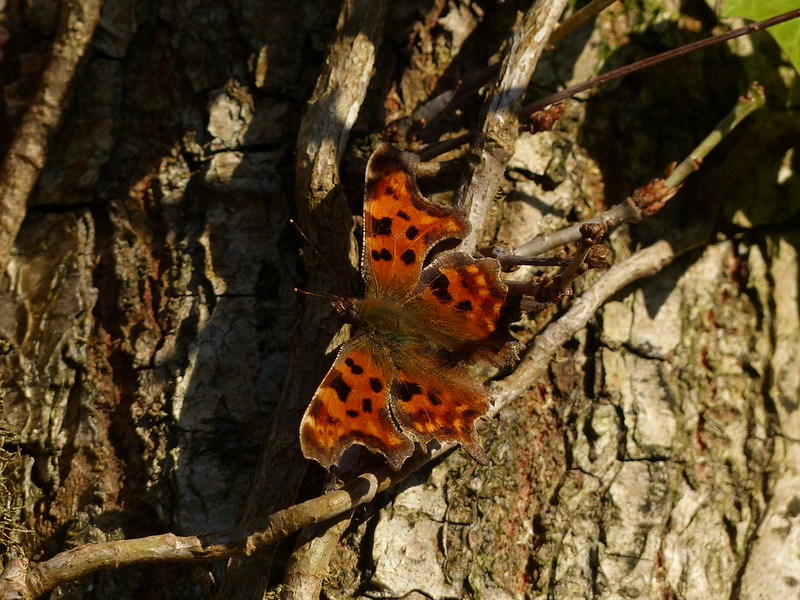
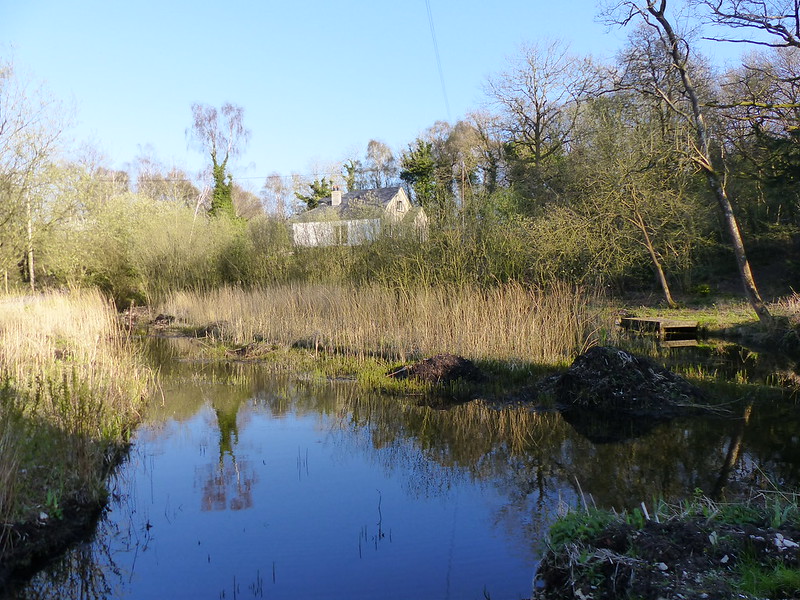

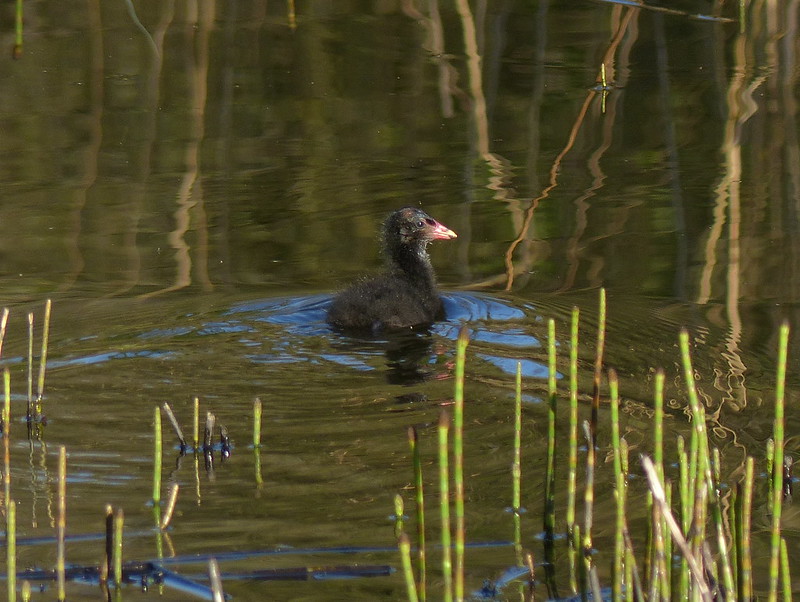

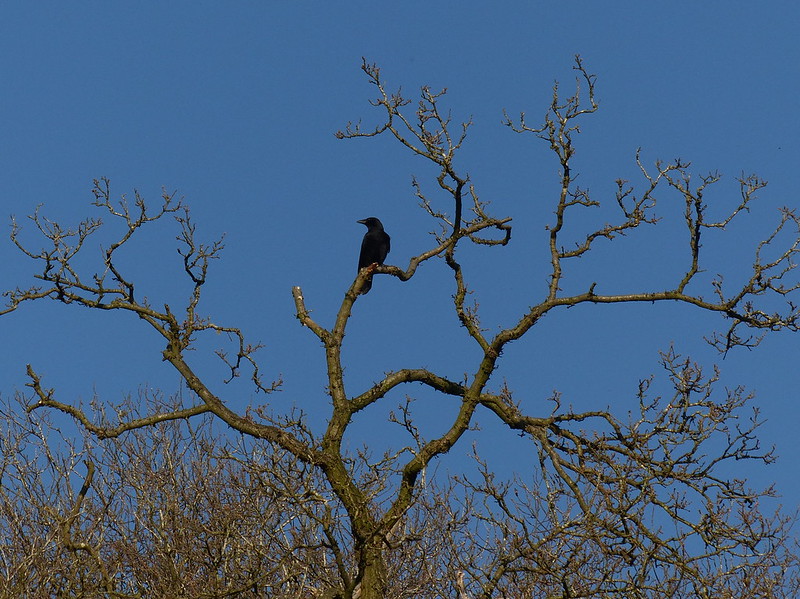
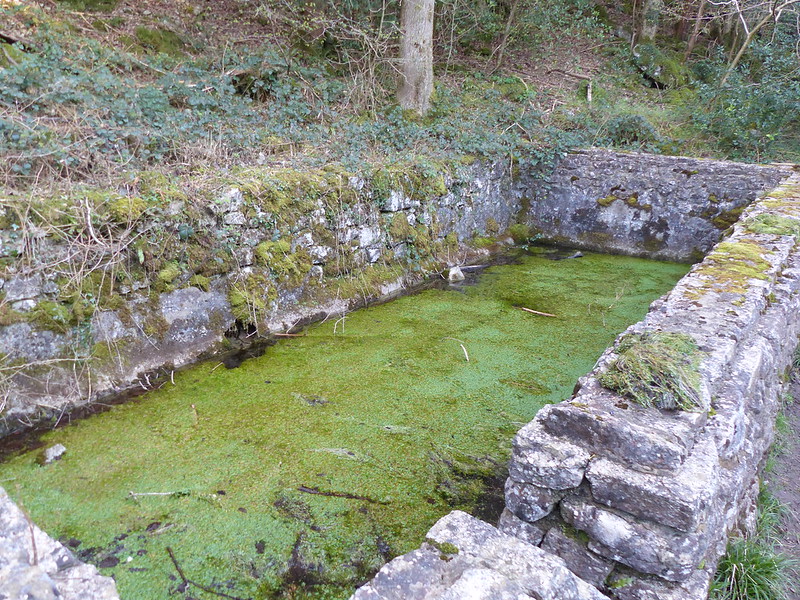

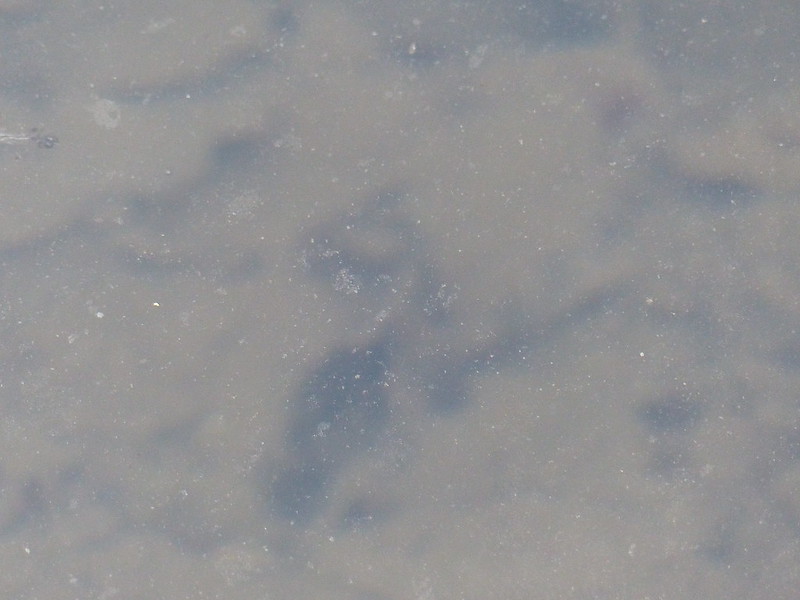


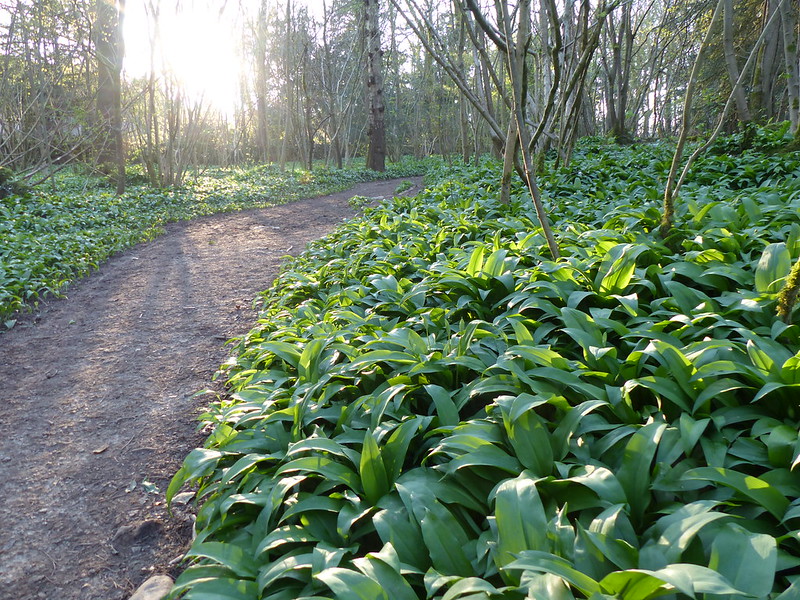

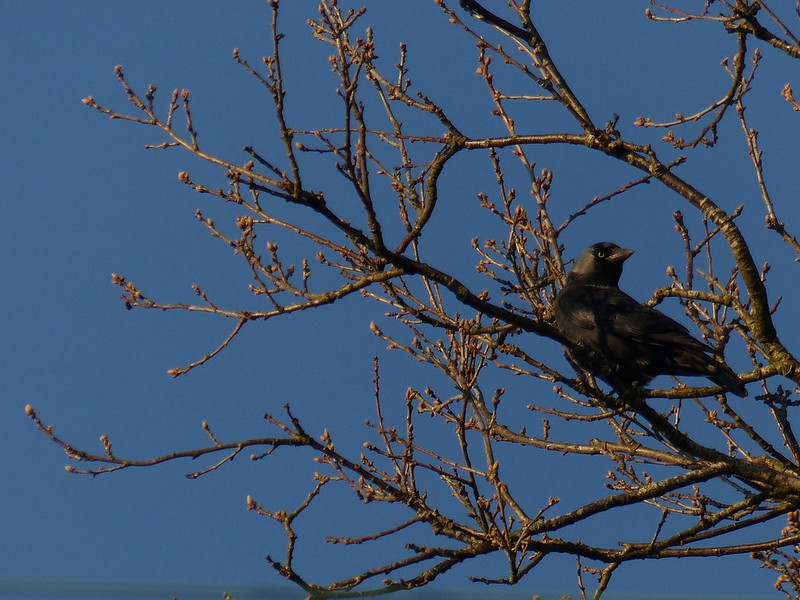

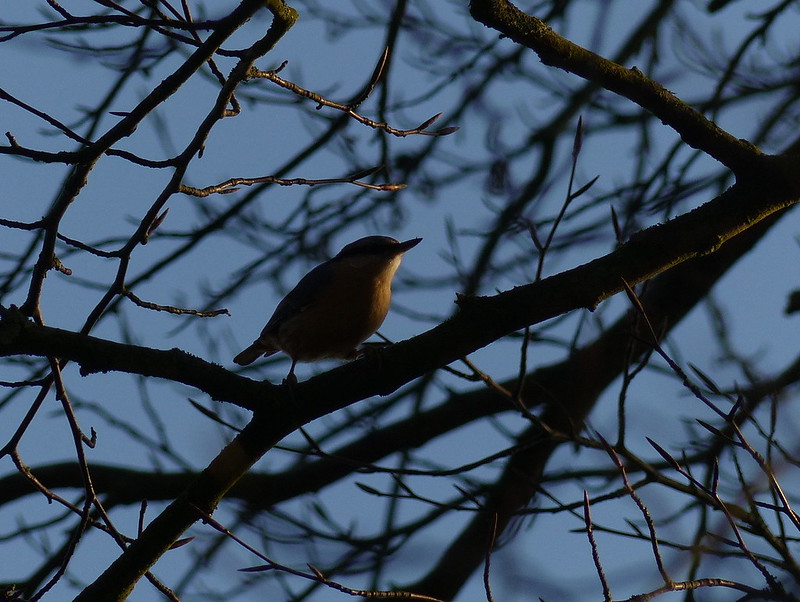
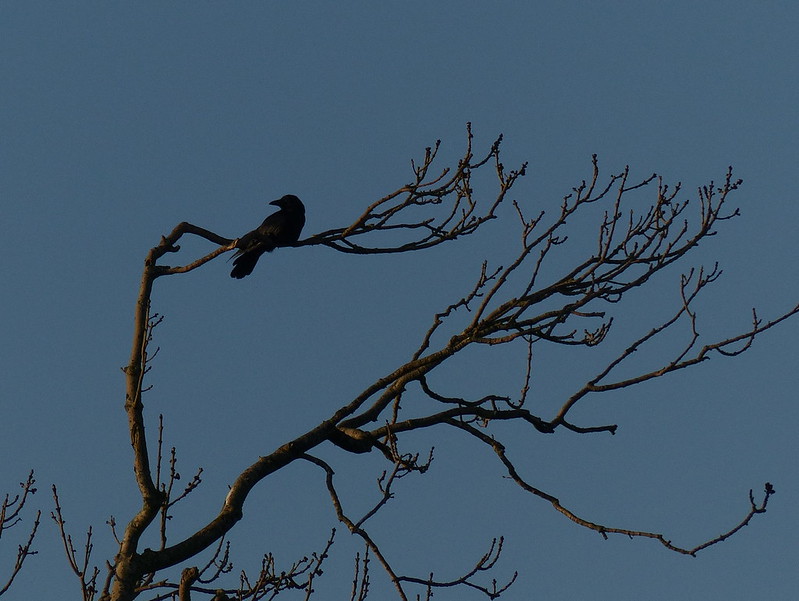
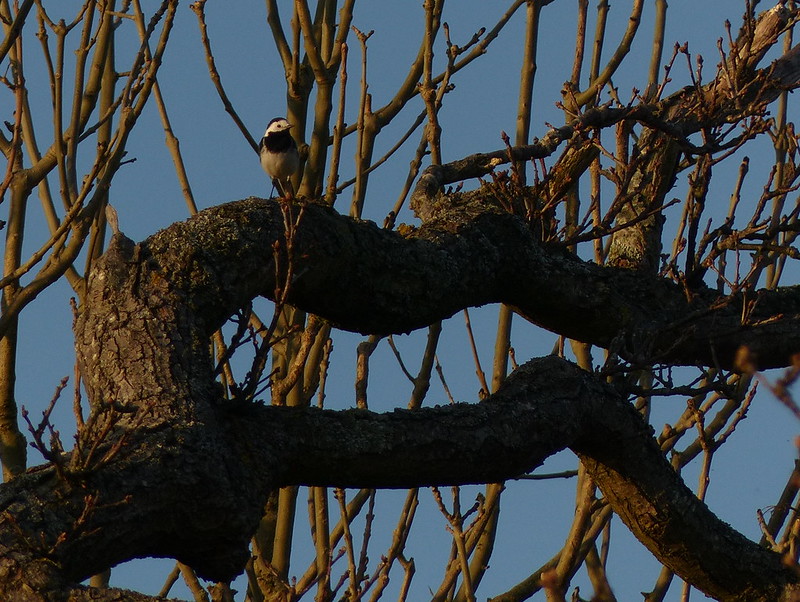

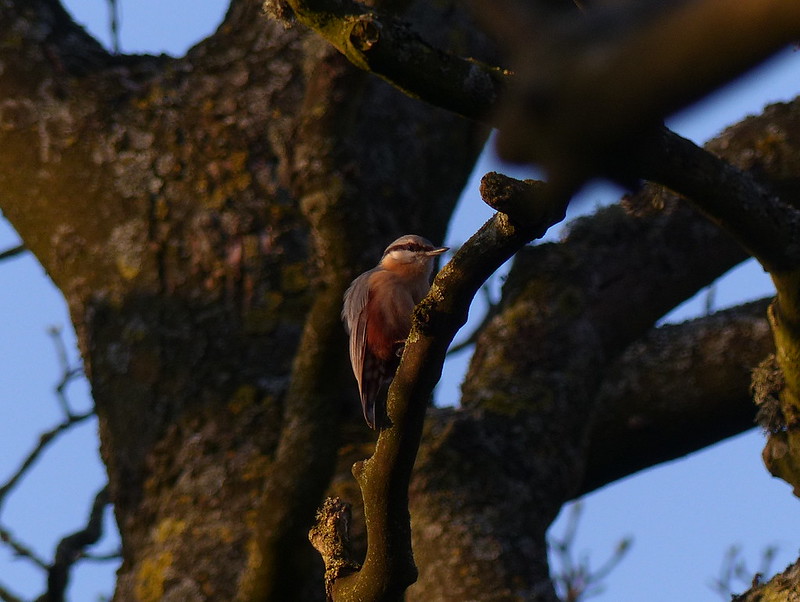

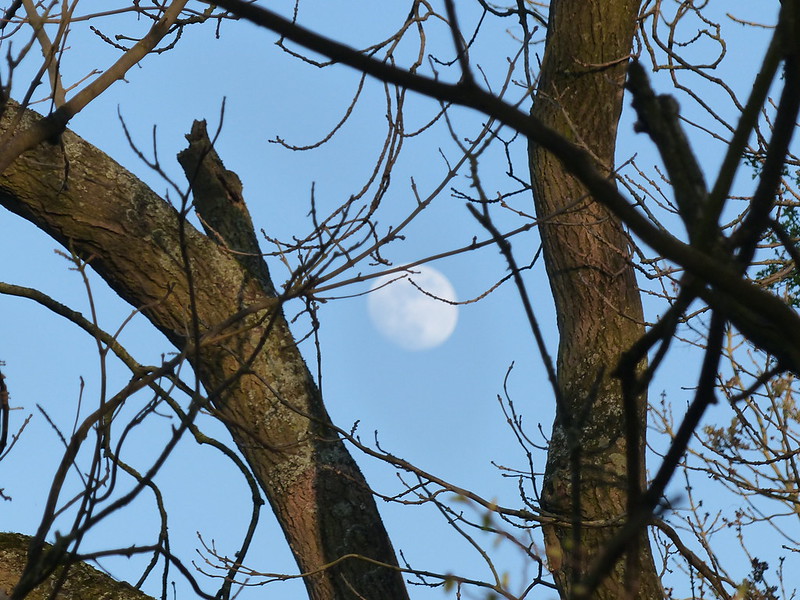

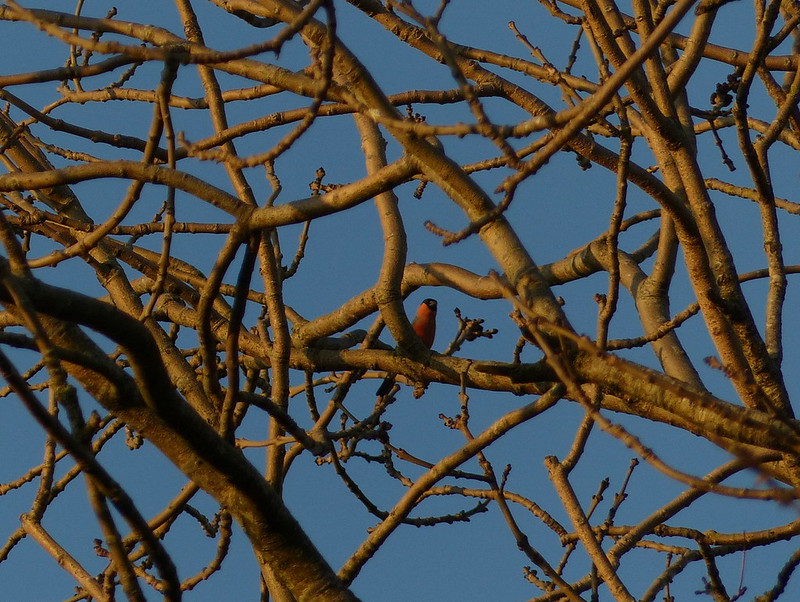

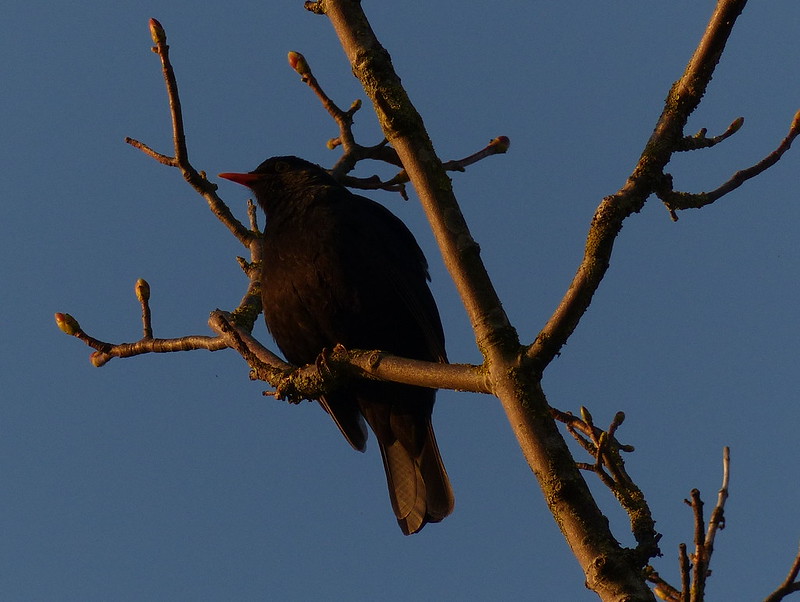
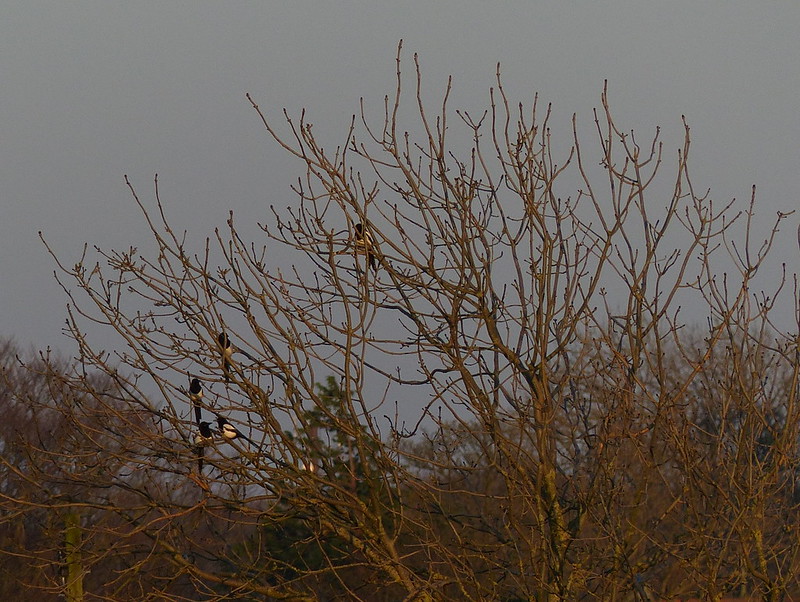
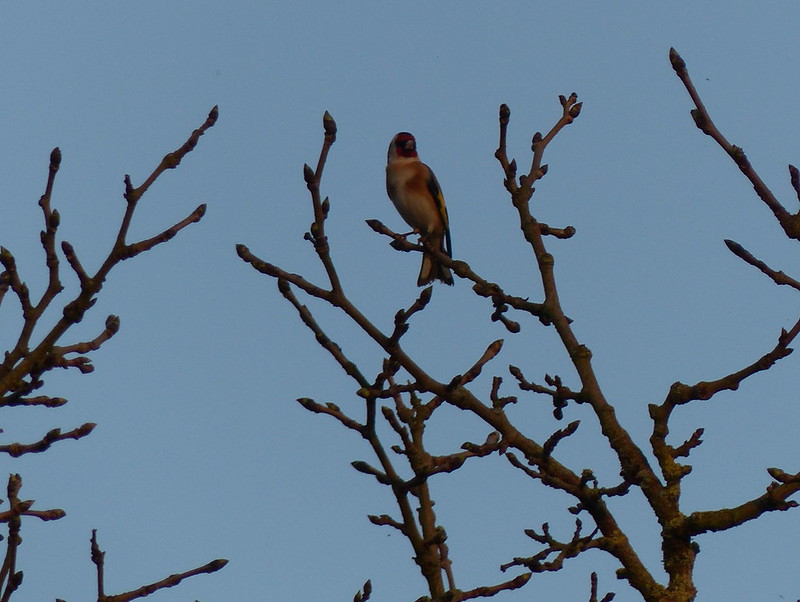
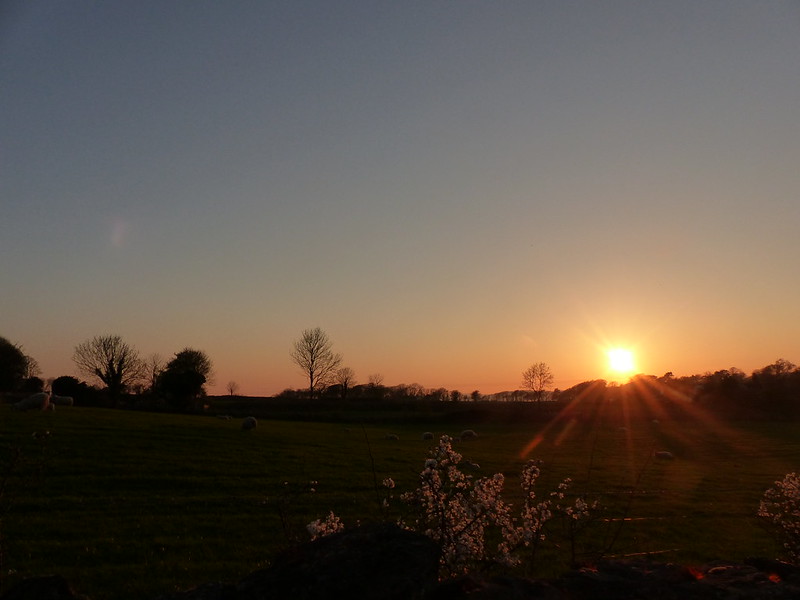







 … and resting for a moment…
… and resting for a moment… The small trees along the railway embankment were also heavily laden with a mixture of Fieldfares, Redwings and Starlings…
The small trees along the railway embankment were also heavily laden with a mixture of Fieldfares, Redwings and Starlings…

 Rather dimly, I wondered why the snow here was only in isolated patches and not the deep covering I’d seen everywhere else. Then it dawned on me that the river here is tidal (this being an estuary) and that the sea would have been up over this area recently. So this must be ice…
Rather dimly, I wondered why the snow here was only in isolated patches and not the deep covering I’d seen everywhere else. Then it dawned on me that the river here is tidal (this being an estuary) and that the sea would have been up over this area recently. So this must be ice… Little forests of ice crystals. Clinging to every grassy hummock, or in any slight channels where water might have gathered…
Little forests of ice crystals. Clinging to every grassy hummock, or in any slight channels where water might have gathered…































